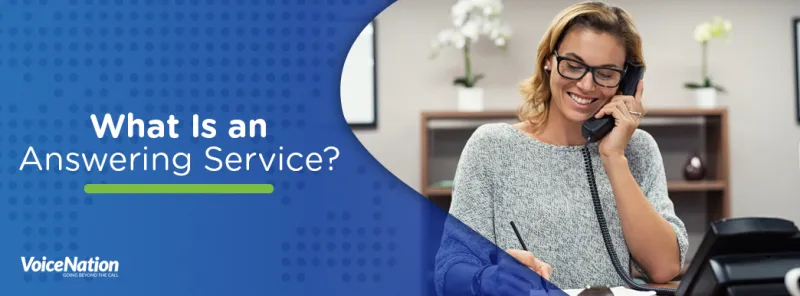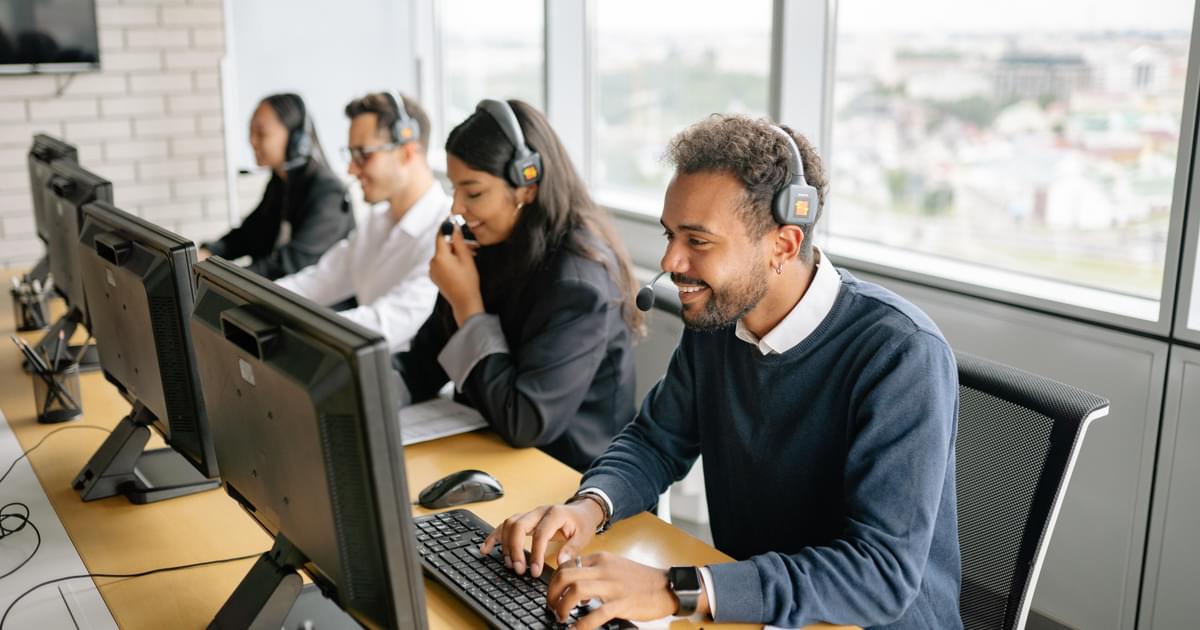All Categories
Featured
Table of Contents
- – What's The Best How Does An Answering Service W...
- – Which Brand Of What Is The Difference Between ...
- – When Are Best Telephone Answering Service - An...
- – What Is The Best Business Answering Services ...
- – Where Is The Best Phone Answering - Serviced ...
- – Which Is The Best Phone Answering - Serviced...
What's The Best How Does An Answering Service Work? Brand
This device and its successors were developed by Sava Jacobson, an electrical engineer with a personal consulting business. While early answering machines used magnetic tape technology, many modern equipment uses solid state memory storage; some gadgets utilize a mix of both, with a solid-state circuit for the outbound message and a cassette for the incoming messages.
"toll conserving" listed below) (local phone answering service). This works if the owner is screening calls and does not wish to consult with all callers. In any case after going, the calling celebration needs to be informed about the call having actually been addressed (in many cases this begins the charging), either by some remark of the operator, or by some welcoming message of the TAD, or addressed to non-human callers (e.
This holds particularly for the Littles with digitally kept welcoming messages or for earlier machines (before the increase of microcassettes) with a special unlimited loop tape, different from a 2nd cassette, devoted to recording. There have actually been answer-only gadgets without any recording capabilities, where the welcoming message needed to inform callers of a state of present unattainability, or e (call answering services).
Which Brand Of What Is The Difference Between An Answering Service And ... Is The Best?

about availability hours. In recording Little bits the greeting generally contains an invitation to leave a message "after the beep". A voice mail that uses a microcassette to record messages On a dual-cassette answerphone, there is an outbound cassette, which after the specified variety of rings plays a pre-recorded message to the caller.

Single-cassette voice mail contain the outbound message at the beginning of the tape and incoming messages on the remaining space. They first play the statement, then fast-forward to the next readily available space for recording, then tape-record the caller's message. If there are many previous messages, fast-forwarding through them can trigger a substantial delay.
This beep is often described in the welcoming message, requesting that the caller leave a message "after the beep". TADs with digital storage for the recorded messages do not reveal this hold-up, obviously. A little bit may use a push-button control center, whereby the answerphone owner can call the house number and, by going into a code on the remote telephone's keypad, can listen to tape-recorded messages, or erase them, even when far from home.
When Are Best Telephone Answering Service - Answer My Phone Sales

Thus the device increases the variety of rings after which it addresses the call (generally by two, resulting in four rings), if no unread messages are currently stored, but responses after the set number of rings (usually 2) if there are unread messages. This allows the owner to discover whether there are messages waiting; if there are none, the owner can hang up the phone on the, e.
Some makers also allow themselves to be remotely triggered, if they have actually been switched off, by calling and letting the phone ring a specific large number of times (typically 10-15). Some provider desert calls already after a smaller variety of rings, making remote activation difficult. In the early days of TADs an unique transmitter for DTMF tones (dual-tone multi-frequency signalling) was regionally required for remote control, since the formerly employed pulse dialling is not apt to convey appropriate signalling along an active connection, and the dual-tone multi-frequency signalling was implemented stepwise.
Any incoming call is not recognizable with respect to these properties in advance of going "off hook" by the terminal equipment. So after going off hook the calls need to be switched to suitable devices and only the voice-type is instantly accessible to a human, but possibly, nonetheless need to be routed to a LITTLE BIT (e.
What Is The Best Business Answering Services - Virtual Receptionists Software?
What if I informed you that you do not have to in fact choose up your device when responding to a consumer call? Somebody else will. So convenient, best? Responding to phone calls doesn't require somebody to be on the other end of the line. Effective automated phone systems can do the technique just as effectively as a live agent and often even much better.
An automated answering service or interactive voice reaction system is a phone system that communicates with callers without a live individual on the line - local phone answering service. When business utilize this innovation, customers can get the answer to a question about your service just by using interactions established on a pre-programmed call flow.
Although live operators upgrade the client service experience, numerous calls do not need human interaction. A simple taped message or instructions on how a client can obtain a piece of info normally fixes a caller's immediate requirement - business call answering service. Automated answering services are an easy and effective way to direct inbound calls to the right individual.
Where Is The Best Phone Answering - Serviced & Virtual Offices & Admin ... Deal
Notice that when you call a company, either for support or item query, the very first thing you will hear is a pre-recorded voice greeting and a series of options like press 1 for client service, press 2 for queries, and so on. The pre-recorded options branch off to other choices depending on the client's choice.
The phone tree system assists direct callers to the ideal person or department using the keypad on a mobile phone. In some circumstances, callers can utilize their voices. It deserves keeping in mind that auto-attendant alternatives aren't limited to the ten numbers on a phone's keypad. When the caller has actually selected their very first choice, you can develop a multi-level auto-attendant that uses sub-menus to direct the caller to the best kind of help.
The caller does not need to communicate with a person if the auto-attendant phone system can handle their issue. The automated service can path callers to an employee if they reach a "dead end" and require assistance from a live representative. It is expensive to employ an operator or executive assistant.
Which Is The Best Phone Answering - Serviced & Virtual Offices & Admin ... Plan
Automated answering services, on the other hand, are substantially less costly and offer significant expense savings at approximately $200-$420/month. Even if you do not have committed personnel to deal with call routing and management, an automated answering service enhances productivity by enabling your group to focus on their strengths so they can more efficiently invest their time on the phone.
A sales lead routed to client service is a lost shot. If a consumer who has product questions reaches the incorrect department or gets insufficient answers from well-meaning staff members who are less trained to deal with a specific type of question, it can be a cause of frustration and dissatisfaction. An automatic answering system can reduce the number of misrouted calls, consequently helping your employees make better use of their phone time while freeing up time in their calendar for other tasks.
With Automated Answering Systems, you can develop a personalized experience for both your staff and your callers. Make a recording of your main greeting, and merely update it routinely to show what is going on in your company. You can produce as numerous departments or menu options as you desire.
Table of Contents
- – What's The Best How Does An Answering Service W...
- – Which Brand Of What Is The Difference Between ...
- – When Are Best Telephone Answering Service - An...
- – What Is The Best Business Answering Services ...
- – Where Is The Best Phone Answering - Serviced ...
- – Which Is The Best Phone Answering - Serviced...
Latest Posts
Premium Ai Answering System
Top Virtual Phone Answering Near Me – Swan
Dependable Automated Answering Service – Adelaide
More
Latest Posts
Premium Ai Answering System
Top Virtual Phone Answering Near Me – Swan
Dependable Automated Answering Service – Adelaide